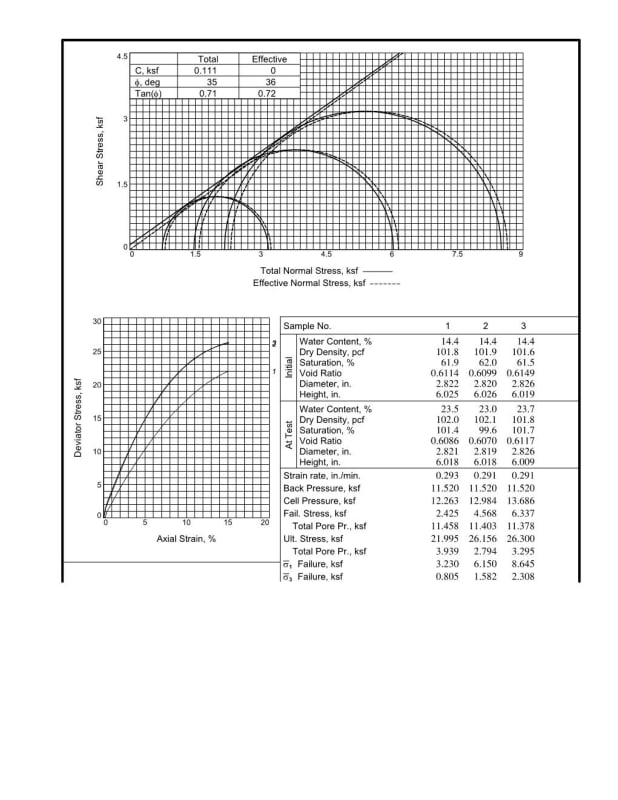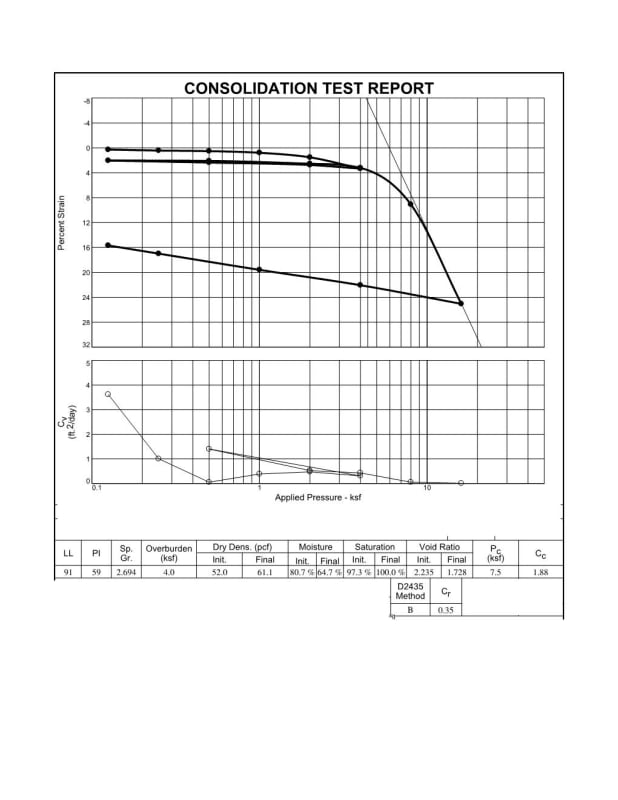I have a consolidation result (Sample depth 26’, groundwater at 3’from existing grade) that shows the soil is overconsolidated with Pc=7.5 ksf. The test was performed as loading 0.1, .25, .5, 1, 2, 4, 1, .25, .5, 1, 2, 4, 8, 16, 4, 1, .25 ksf. Lab test shows soil type is CL, natural moisture 81%, PL=32, LL=91. It’s in coastal area. Seeking advise if the soil is really overconsolidated? The reason of doubt is 1) MC is very close to LL than PL, 2) in consolidation test the rebound pressure (4 ksf) already exceeded the existing overburden pressure say about 2 ksf (not sure if it has any effect on determining the preconsolidation pressure), 3) chance of disturbance of test sample
Thanks in
Thanks in


